The MEK cemetery was previously inaccessible as it lay inside the former boundaries of Camp Ashraf. Following the Iraqi military operation to reclaim illegally held land from the MEK in April 2011, the cemetery is now open to view and to independent investigation.
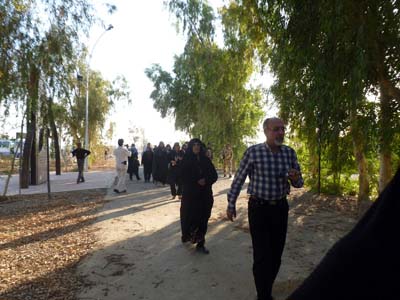
Families and former MEK members arriving at the cemetery led by Mr Hassan Azizi a veteran former member. He spent years struggling to get himself and his children out. Still later his wife also managed to escape. The family now live in the Netherlands. Mr. Azizi was part of the European delegation recently visiting Iraq and the Camp.
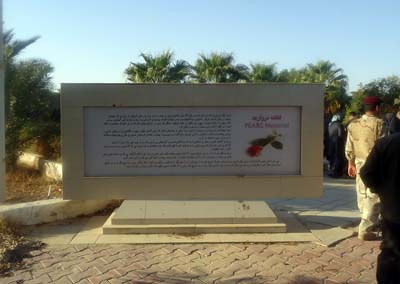
This is a memorial to the MEK who died in the MEK’s Operation Pearl in Iraqi Kurdistan in which Rajavi took orders from Saddam to massacre Kurdish villagers. Maryam Rajavi famously ordered her forces to run over the victims with their tanks so as not to waste bullets unnecessarily. The MEK, acting as Saddam’s Private Army, were used to viciously quell the Kurdish uprisings in the north.
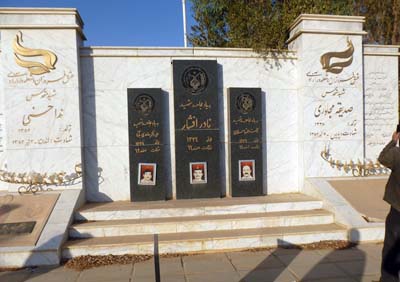
In the south in 1991 the MEK were also used to suppress Shiite uprisings. This picture is a memorial to three of the top MEK commanders killed by the people of Karbala during the Shiite uprising when they took over Saddam’s Secret services HQ in the province. The bodies were never recovered. The three central graves are flanked by the graves of Neda Hassani and Sediqeh Mojaveri who died as a result of self-immolation ordered by Maryam Rajavi to protest her arrest by French anti-terrorism police at Auvers-sur-Oise in 2003.
Before the Iraqis gained control of the cemetery Rajavi had ordered that the pictures of the graves in the whole graveyard be mixed up so they do not correspond to the names on the graves. Perhaps only Rajavi can explain his motive for such a bizarre act.
The Iraqis have reported however that some of the graves have been found to contain more bodies than the single named person indicated on the headstones.
Ex members identified many graves of people who have been killed in the hands of the leaders of the organisation.
Among the graves they also found the grave of Nader Rafi’ee Nejad
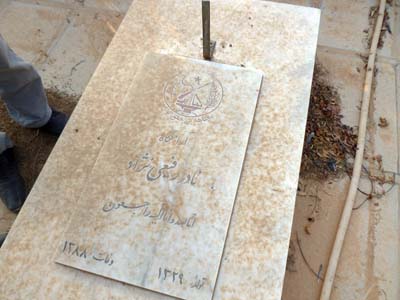
The grave of Nader Rafi’ee Nejad
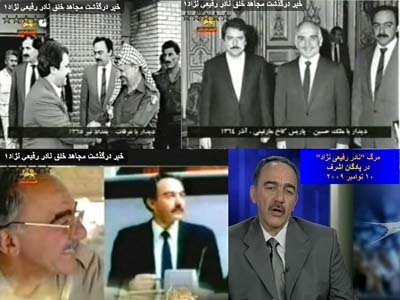
Nader Rafi’ee Nejad acted as a torturer for the Mojahedin-e Khalq leader Massoud Rajavi. He was a veteran member of the MEK who, along with Reza Khaksar (later killed during an armed clash in 1981) and Hassan Mohassel (a former police officer and later a guard in the MEK’s prisons in Iraq), served with the Revolutionary Court in Evin prison after the Iranian revolution.
Rafi’ee Nejad interrogated and tortured former officials of the ousted regime of Shah. Due to the MEK’s pursuit of its own radical policies after 1980, Rafi’ee Nejad, Mohassel and Khaksar were later dismissed from the Revolutionary Court by the government of the Islamic Republic at that time.
After the armed struggle began in 1981, Rafi’ee Nejad fled to Europe and was appointed to the MEK’s foreign relations department. In 1985, he was introduced as a leading member and in 1991 as deputy to an executive board in the MEK. In 1990, he shed his ‘diplomatic’ suit and donned the uniform for jailors of the MEK in Iraq.
In that year, he attended a course with Iraq’s intelligence and security service to undergo classic training by Iraqi interrogators.
He was involved in torturing Mohammed Hussein Sobhani and also the killing of Parviz Ahmadi who died under torture.
In recent years after the fall of Saddam, Nader Rafi’ee Nejad frequently appeared on the clandestine satellite TV station of the organisation pretending to be a legal expert, promoting the punishment of the ex-members wherever they could be found. He always referred to the cult leader’s fatwa that ‘the people who have managed to run away from the cult have to be killed…’
Two of the victims who have been directly tortured by Nader Rafi’ee Nejad are Mohammad Hussein Sobhani and Ali Ghashghavi. In the picture above, they are standing beside the grave of their former torturer. Both men were sent to Abu Ghraib political prison by Massoud Rajavi after extensive imprisonment, isolation and torture inside the MEK’s own prisons failed to force them to submit to Rajavi. Rafi’ee Nejad frequently visited them even when they were in Abu Ghraib. They were released during the fall of Saddam in 2003. There were over 50 registered ex-MEK prisoners in Abu Ghraib at that time labelled as a group as ”Mojahedin Deposits”.
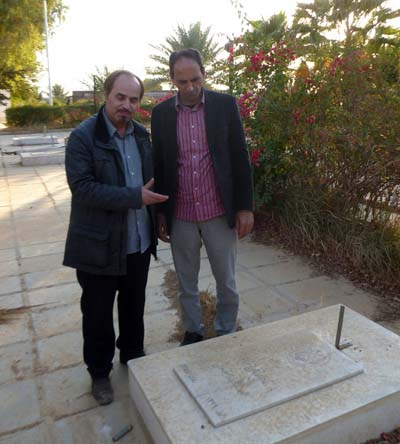
Remembering the brutality of Rajavi’s torturers and prisons, both victims of Rajavi and Saddam prayed for forgiveness for their torturer.

